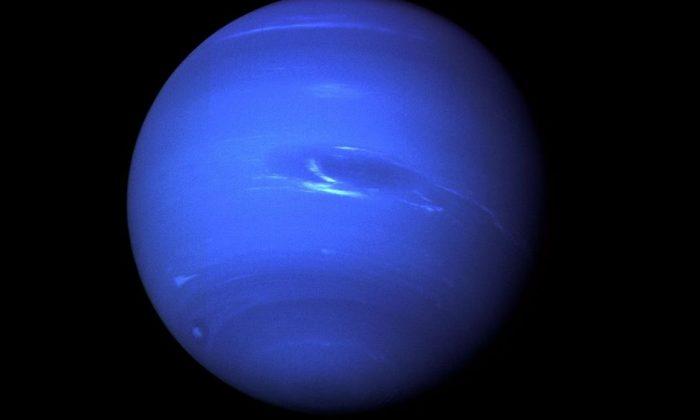Dramatic changes in temperatures in the planet Neptune’s atmosphere over the past two decades could be due to seasonal changes in the ice planet’s atmospheric chemistry, or random weather patterns, among other factors, according to a new study.
To their surprise, they discovered an unexpected drop in the planet’s global temperatures by 8 degrees Celsius (14 degrees Fahrenheit) between 2003 and 2018.
Furthermore, a number of observations from the Gemini North telescope in Hawaii in 2019 and the Subaru telescope in Japan in 2020 revealed that this drop in temperature was followed by dramatic warming of Neptune’s south pole between 2018 and 2020 by 11 degrees Celsius, effectively reversing the previous globally-averaged cooling trend.
Neptune, the most distant planet in our solar system, has an axial tilt of 28.5 degrees, which is not too dissimilar to that of planet Earth, and thus it experiences seasons.
However, due to its great distance from the Sun, such seasons last for more than 40 years, meaning its southern hemisphere has been in summer since 2005.
“Such polar warming has never been observed on Neptune before,” scientists wrote in their study.
Researchers are unsure as to what is causing the unexpected stratospheric temperature changes, and note that their findings “challenge scientists’ understanding of Neptune’s atmospheric variability.”
“This change was unexpected,” said Dr. Michael Roman, a postdoctoral research associate at the University of Leicester and lead author on the paper. “Since we have been observing Neptune during its early southern summer, we would expect temperatures to be slowly growing warmer, not colder.”
Dr. Glenn Orton, a senior research scientist at NASA’s Jet Propulsion Laboratory and co-author of the study, noted: “Our data cover less than half of a Neptune season, so no one was expecting to see large and rapid changes.”
However, researchers believe the unexpected changes could be due to a number of factors, such as the solar cycle of the sun, seasonal changes in Neptune’s atmospheric chemistry—which can alter how effectively the atmosphere cools—or random weather patterns.
“The 11-year solar cycle (marked by periodic variation in the Sun’s activity and sunspots) has been previously suggested to affect Neptune’s visible brightness, and the new study reveals a possible, but tentative, correlation between the solar activity, stratospheric temperatures, and the number of bright clouds seen on Neptune,” researchers wrote.
Scientists said that follow-up observations of the temperature and cloud patterns are needed to assess the potential connection in the future.
Researchers said the James Webb Space Telescope (JWST), which is set to observe both ice giants Uranus and Neptune later this year, could provide further information regarding the phenomenon.
“The exquisite sensitivity of the space telescope’s mid-infrared instrument, MIRI, will provide unprecedented new maps of the chemistry and temperatures in Neptune’s atmosphere, helping to better identify the nature of these recent changes,” said Leigh Fletcher, professor of planetary science at the University of Leicester and another co-author of the study.






Friends Read Free